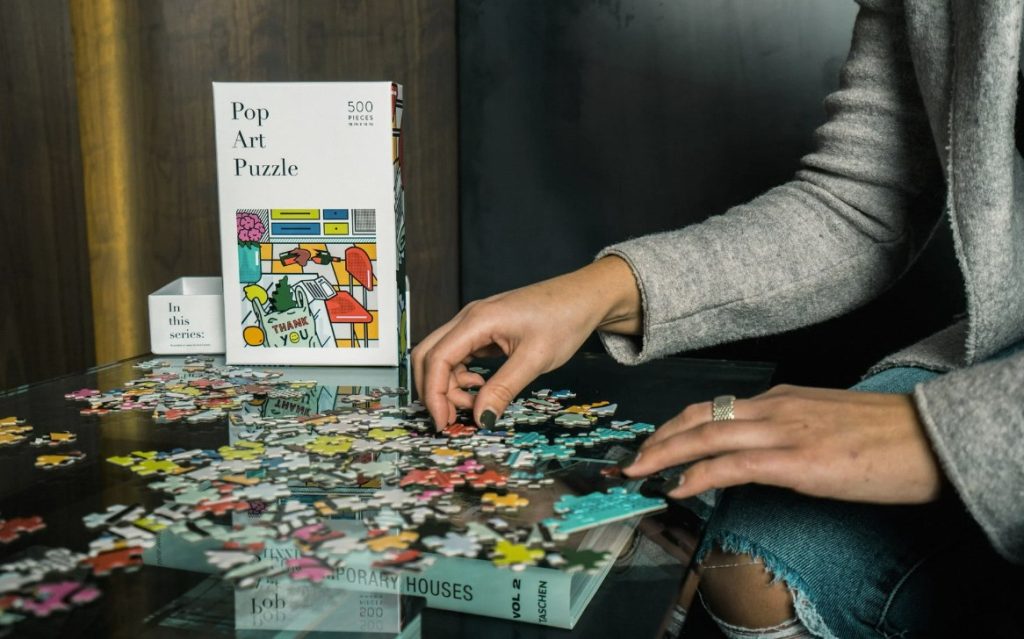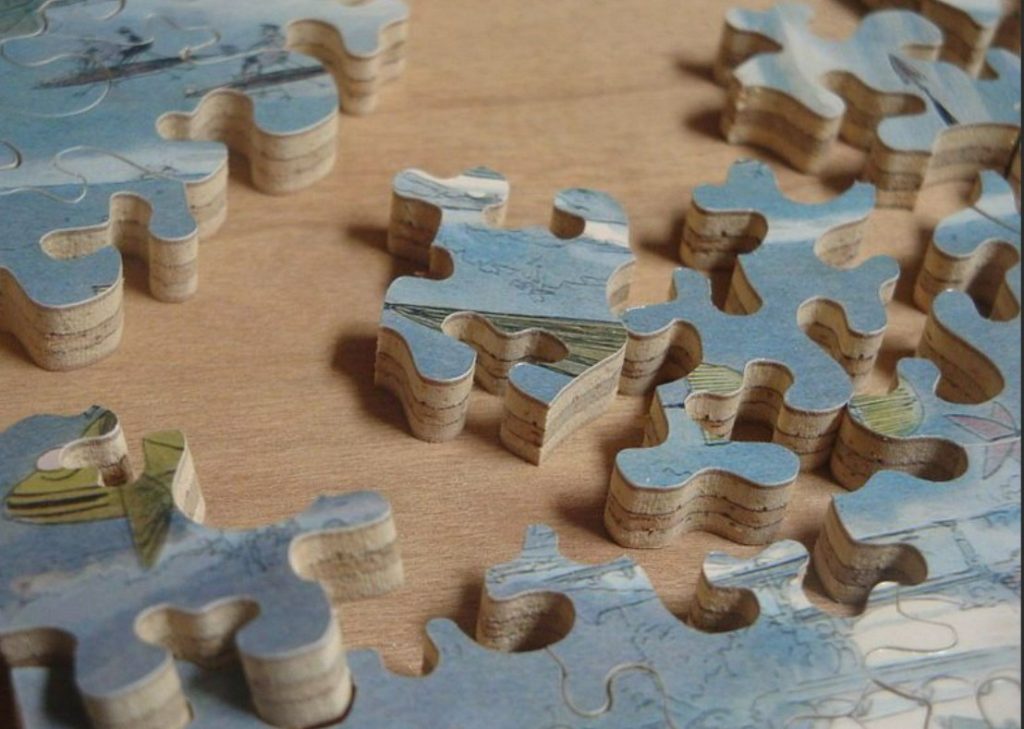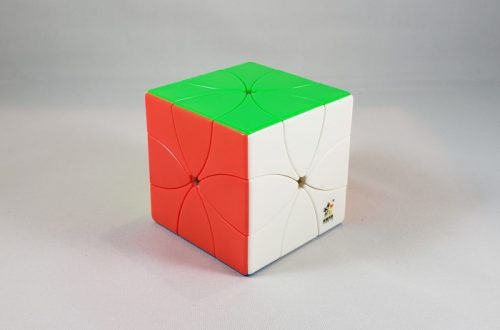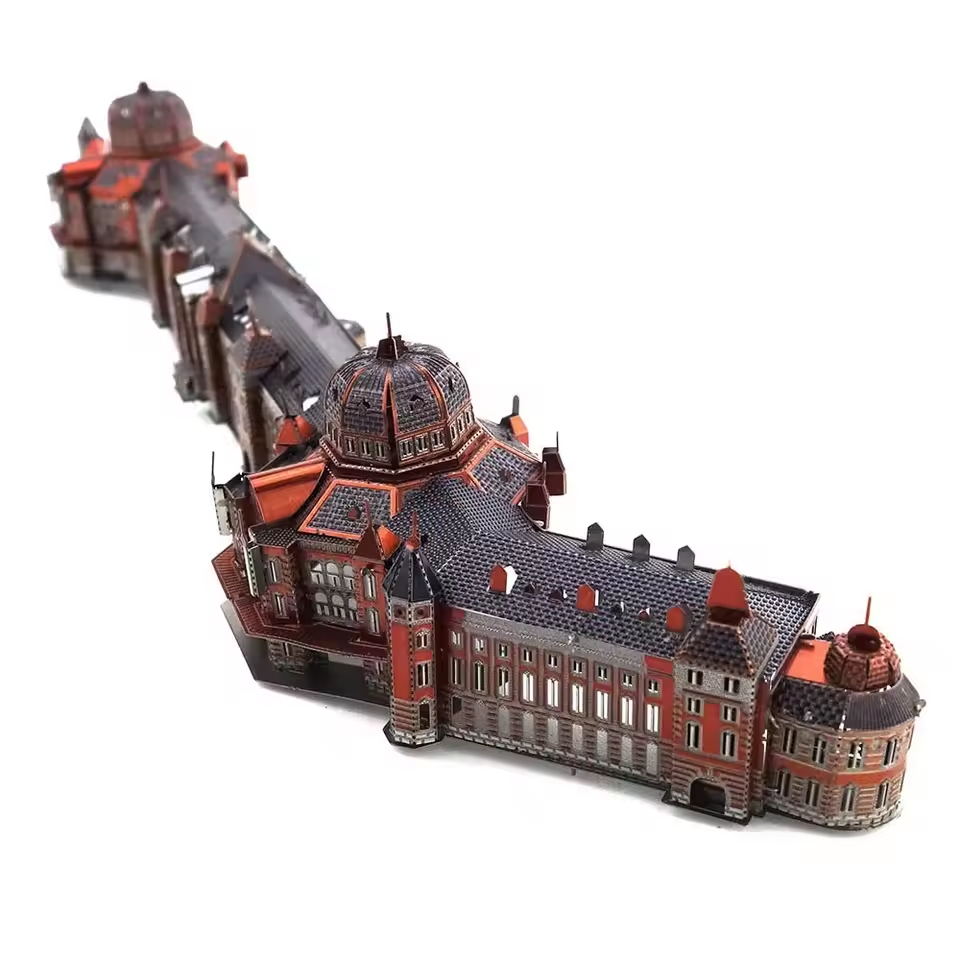For many, jigsaw puzzles represent a relaxing and solitary activity. But beneath the seemingly simple act of connecting pieces lies a world of strategic thinking and problem-solving. Whether you’re a seasoned puzzler or a curious beginner, this guide will equip you with the tools to transform your experience from frustration to triumphant completion.
Part 1: Laying the Foundation

1. Prepare Your Workspace:
The environment in which you choose to work on your puzzle can have a substantial impact on your overall enjoyment and success. Selecting a suitable environment involves finding a well-lit area with a flat surface and ample space to spread out all the puzzle pieces. Optimal lighting is essential for clearly distinguishing different colors and shapes, and it can also help prevent eye strain during extended periods of puzzling. Additionally, ensuring that you have a comfortable chair and sufficient lighting will minimize fatigue as you immerse yourself in the challenge. To maintain organization and prevent any pieces from getting lost, consider using a puzzle mat. A puzzle mat not only keeps the pieces secure but also allows you to effortlessly roll up and store the puzzle if needed, providing a convenient and practical solution for maintaining a neat and functional workspace.
2. Sort and Conquer:
Effective sorting is essential to streamline and optimize the puzzle-solving process. To kickstart this organizational phase, start by separating the straight-edged pieces, which will eventually form the puzzle’s border. This fundamental step lays the groundwork for the puzzle assembly. Following this, you can further streamline the sorting process by categorizing the remaining pieces according to color, pattern, or theme. This strategic approach allows you to create smaller, more manageable sections, providing the opportunity to concentrate on specific areas of the puzzle at a time. By meticulously organizing the pieces in this manner, you’re able to approach the puzzle in a more systematic and efficient manner. This method not only enhances your ability to locate and connect the appropriate pieces but also contributes to a more structured and methodical approach to puzzle-solving, ultimately leading to a smoother and more gratifying completion of the puzzle.

Part 2: Building the Framework
1. Prioritize the Border:
Once you’ve identified the straight-edged pieces, assemble the puzzle’s frame. The completed border provides a crucial reference point for the rest of the pieces. Look for unique features on the edge pieces, like knobs or indentations, to help them fit together.
2. Identify Distinctive Features:
As you delve into assembling the inner sections of the puzzle, it’s beneficial to train your eye to recognize the unique features present on the puzzle pieces. This can encompass a range of details, from identifying a specific shade of color to discerning a distinct shape within a pattern. By honing in on these intricate characteristics, you can efficiently distinguish and identify potential matches more quickly. Developing a keen eye for these nuanced features allows you to navigate through the puzzle’s intricacies with greater ease and precision, ultimately expediting the solving process. Additionally, by focusing on these details, you’ll gradually refine your visual recognition skills, enhancing your ability to discern and connect pieces based on their individual attributes. This heightened level of attention to detail not only enhances your overall puzzle-solving experience but also contributes to a more fulfilling and enjoyable journey as you bring the puzzle to completion.

Part 3: Putting the Pieces Together
1. Embrace Flexibility:
Don’t get fixated on one particular section. If you get stuck trying to fit a piece in a specific spot, move on and come back to it later. The beauty of jigsaw puzzles lies in their interconnectedness. A seemingly unrelated piece from another section might be the key to unlocking the area you’re struggling with.
2. Think Beyond Color:
Although color is an important factor, successful puzzle solving involves more than just matching hues. It is crucial to pay close attention to the texture, shading, and details within each color block. By focusing on these aspects, you can discern subtle differences that may not be immediately apparent. For instance, a slight variation in shade or a subtle change in texture can indicate that two pieces, despite having similar colors, do not actually belong together. By taking note of these nuances, you are able to refine your ability to identify the correct pieces based on visual texture and shading cues, elevating the puzzle-solving process beyond mere color matching. This careful observation and attention to detail not only enhances your puzzling skills but also allows for a more precise and accurate assembly of the puzzle, leading to a more satisfying and fulfilling overall experience.
Part 4: Honing Your Skills

1. Practice Makes Perfect:
As you engage in the process of completing puzzles, you will gradually become more at ease and adept with each challenge you undertake. By working on puzzles with different difficulty levels and varying piece counts, you will develop a diverse repertoire of strategies and techniques. This exposure will allow you to refine your visual recognition skills and improve your ability to discern patterns and shapes, contributing to a more efficient and enjoyable puzzling experience. Through the accumulation of experiences with a range of puzzles, you will also enhance your problem-solving abilities and develop a better understanding of how to approach different types of challenges. This iterative process of learning and improvement will ultimately lead to a greater sense of confidence and competence as a puzzle solver, enabling you to tackle increasingly complex puzzles with newfound skill and proficiency.
2. Embrace the Challenge:

Don’t be afraid to step outside your comfort zone. Challenge yourself with puzzles featuring complex patterns, unusual shapes, or a high piece count. These experiences will not only hone your puzzle-solving skills but also introduce you to new and rewarding aspects of the hobby.
Jigsaw puzzles offer a unique blend of challenge and satisfaction. By following these steps and embracing a strategic approach, you’ll transform yourself from a casual puzzler into a jigsaw puzzle master, ready to conquer even the most intricate challenges. So, grab your next puzzle, spread out the pieces, and get ready to embark on a rewarding journey of problem-solving and accomplishment.


